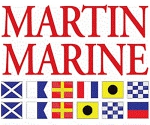Structural Inspection of Keel, Rudder and Steering System
by Technical Committee, March 1st, 2023
2024 Vic Maui
Having your keel fall off the boat in the middle of a race to Maui would probably ruin your whole day. And a rudder and steering failure is not far behind on the list of things you never want to experience at sea. These disasters are not some far-fetched risks dreamed up by boffins in far away London. Such failures happen more regularly than people in the yacht industry care to admit. And it did happen during the 2019 Transpac http://www.sailingscuttlebutt.com/2020/05/14/keel-failure-in-the-pacific-ocean/
And so a new requirement introduced into the Offshore Special Regulations (“OSR”) in 2020 was the need for a structural inspection of the keel and rudder. Vic-Maui also requires this inspection to include the whole steering system. This inspection is visual and pretty straight forward to professionals familiar with yacht structures. Rather than becoming a burden in your preparations, this inspection is something that all yachts should incorporate into their annual maintenance plan.
World Sailing prepared the following briefing note in the form of FAQs.
OSR 3.02.2 Structural Inspection and Appendix L
Frequently Asked Questions
What are the checks designed to do?
Keels have been breaking off yachts for many years. The yacht types losing keels and rudders range from cruising to high performance racing yachts and from newly built to old. This regulation is designed to require a visual inspection each 2 years. It is designed to capture visual signs (cracks, movement, corrosion, loose keel bolts, loose or irregular rudder bearings) that may indicate a potentially serious problem. It is expected that once noted, the Owner would undertake a more detailed investigation or just get it repaired.
Who is a ‘qualified’ Inspector to conduct this visual inspection?
The range of Inspectors has been kept broad since the inspections are visual and no specialized equipment or techniques are required. Inspectors could be marine surveyors, naval architects or engineers, or shipyard mechanics with a minimum of 5 years’ experience working on yacht mechanical systems or composite materials. The Owner or persons directly employed by the Owner is not considered suitable.
Some countries may require additional certification in order to undertake yacht inspections. Each MNA will have to determine if they will require additional qualifications. (NOTE: The 2024 Vic-Maui qualifications are given in Section 3.02.2 of Appendix A to the Notice of Race).
Does this keel inspection ensure seaworthiness of my yacht?
This is not a guarantee that the yacht is seaworthy or that the keel or rudder will not fall off.
What are causes of keel loss?
Keel and rudder losses are generally as a result of the following factors:
- Unrepaired damage from a grounding
Poor maintenance with resulting corrosion of metal components - Damage from at sea impacts (logs, marine life, etc.)
- Metal and composite fatigue: Yachts appendages are designed for a maximum number of loading cycles (waves primarily). Cruising yachts are designed to have a large number of cycles, hence a long sailing life, however racing yachts, designed for reduced weight and higher keel loads have a limited life. This life is determined by the design specifications, the days sailed and size of the loads (pounding into waves).
What risks does a keel inspection reduce?
The visual inspection is targeted to reduce losses due to unrepaired grounding damage, poor maintenance, and at sea impacts.
What is fatigue?
In materials science, fatigue is the weakening of a material caused by cyclic loading that results in progressive and localised structural damage and the growth of cracks. Once a fatigue crack has initiated, each loading cycle will grow the crack a small amount, typically producing striations on some parts of the fracture surface. The crack will continue to grow until it reaches a critical size which exceeds the fracture toughness of the material, producing rapid propagation and typically complete fracture of the structure.
Which risks are more difficult to Identify?
It does not target fatigue unless there are visible signs (cracks, movement). Visible and non-visible cracks can be a sign of fatigue and a danger to structural integrity. In this case it should be established whether a fatigue cracking mechanism is present. The characteristics of the cracks and the dimensions and locations of the cracks. Upon regular inspection (perhaps more frequent than 2 years) the growth rate of cracks. Subsequent non-destructive testing (NDT) may be necessary in this case.
How is a tip swing test conducted?
The yacht is suspended with the keel off the ground/cradle. A member of the inspection team braces himself and attempts to move the keel while the Inspector looks, both from the outside and at the inside (keel floor) of the yacht, for movement (opening and closing of any cracks) at the keel/hull interface.
Do Race Organizers have to verify the qualifications of the inspector?
The OSRs do not expect or require the Race Organizer to verify the Inspector’s qualifications. If the Race Organizers or MNA wish to add additional qualifications and possible verifications, they may do so in the Notice of Race.
What have Race Organizers to do?
Note in (Section 3.2.2 of Appendix A to the Notice of Race), a copy of the “Keel and Rudder Inspection Form” shall be submitted. An example of such a form is given in Appendix L to the OSRs.
What shall the Technical Committee of the Race Organizer have to decide if in the column Inspector’s Notes, negative remarks are made such as small cracks in gelcoat, slight clearance in rudder bearings, slight deflection or items to be kept under surveillance?
Allow her entry.
What shall the Technical Committee of the Race Organizer do if the inspector has noted structural failures in the form column and the owner has no proof of any action taken or has done nothing about it at all?
Refuse her entry.
Updated 26 March 2021
updated Mar 01, 2023















